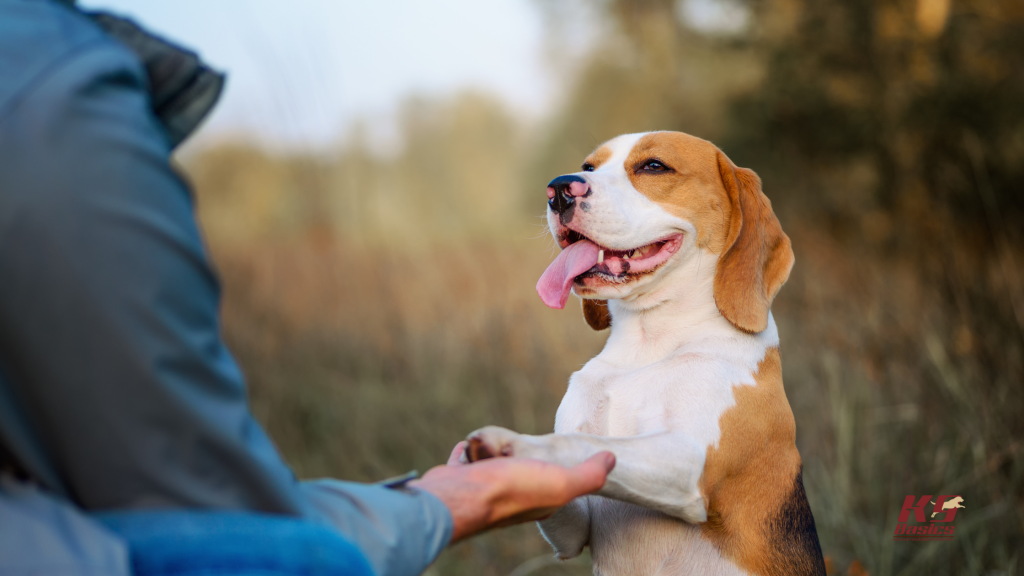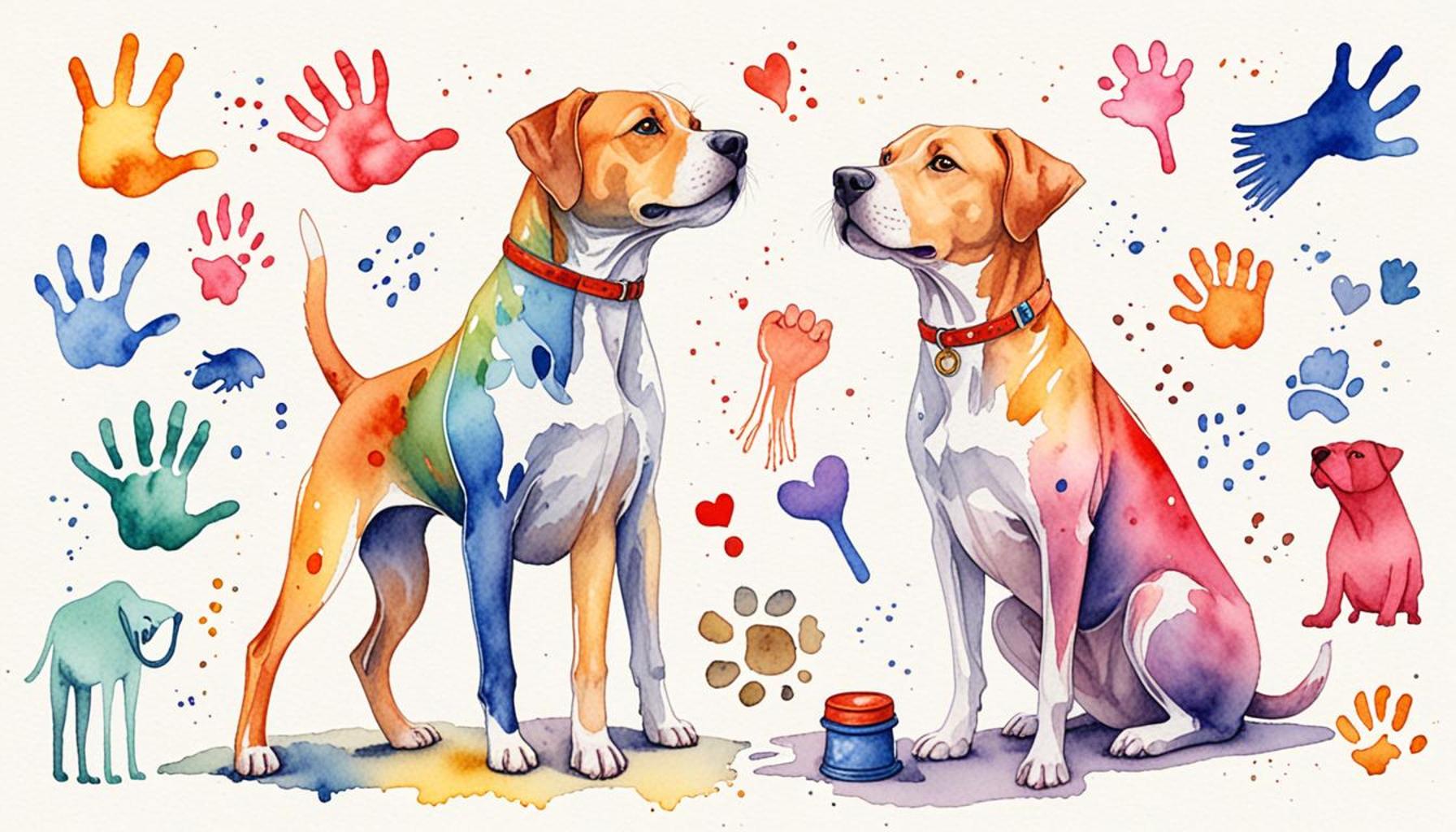Positive Training How to Reinforce Desired Pet Behaviors Effectively

The bond between pets and their owners is often strengthened through effective communication, training, and understanding. One of the most impactful methods of achieving this is through positive reinforcement, which encourages desired behaviors in animals by rewarding them for good actions. This approach not only fosters a harmonious relationship but also enhances the overall well-being of your pet.
Understanding the principles of positive training is essential for any pet owner looking to create a well-behaved companion. Here are some key points to consider:
- Improved behavior: Positive reinforcement directly influences a pet’s behavior, promoting good habits.
- Strengthened bond: Engaging in training builds trust and communication between you and your pet.
- Reduced stress: Positive approaches create a comforting environment for animals, minimizing anxiety during training.
As we delve deeper into the world of positive training, prepare to uncover the Top 5 techniques that can transform your pet’s behavior. Each method is designed to not only instruct but also encourage a loving partnership that lasts a lifetime.
FOR MORE INSIGHTS: Click here for safe travel tips
Top 5 Tips for Positive Training: Reinforcing Desired Behaviors in Pets
Training pets is not just about teaching them tricks or making them follow rules. It’s about building a relationship and enhancing communication between humans and animals. Positive training, a popular approach among pet owners and trainers, underscores the importance of rewarding good behavior rather than punishing inappropriate actions. This philosophy is based on the premise that rewarded actions are more likely to be repeated, cultivating an environment where pets feel safe, understood, and eager to learn. In this article, we delve into the top five strategies to effectively implement positive training, creating a balanced and joyful coexistence with furry companions.

5. Establish Clear Commands
The cornerstone of effective positive training lies in establishing clear commands. Clear commands ensure that pets understand what is expected of them. Communication is vital, and concise commands pave the way for clarity. For example, the command “sit” should be straightforward and devoid of variations like “sit down” or “sit please,” eliminating any potential confusion for the pet. Setting this up early in the training builds a solid foundation for further learning and behavior modification.
Steps to Establish Clear Commands:
- Choose short, distinct words or phrases: Simplicity is key. Words should be easy to pronounce and comprehend.
- Use the same tone of voice for consistency: Pets often respond to the tone as much as the words themselves. A consistent tone helps reinforce the command.
- Practice commands regularly for reinforcement: Repetition cements learning, ensuring that commands become second nature to your pet.
Consistency in commands not only aids communication with your pet but also helps build trust. They begin to understand that you are reliable in your communication, thus more likely to respond positively.
4. Timing Is Everything
Timing is indeed everything when it comes to training pets. Rewarding a pet for a desired behavior needs to happen almost immediately to create a clear association. The window of understanding for animals is rather brief, and any delay from action to reward can result in mixed signals. This principle emphasizes delivering rewards promptly—within seconds—to ensure that the pet associates their action with the given reward.
Importance of Timing:
- Immediate reinforcement leads to better understanding: A quick reward indicates that the pet’s behavior is correct.
- Establishes a clear connection between the behavior and the reward: Pets learn the cause-effect relationship more efficiently when the timing is precise.
- Encourages repeat performance of desired actions: The faster a pet receives positive feedback, the more likely they are to repeat the behavior.
Consequently, perfecting your timing can accelerate the learning process and foster a stronger bond with your pet, as they understand and appreciate the structured feedback.
3. Use High-Value Rewards
The use of high-value rewards is a tactic that can drastically enhance training effectiveness. Not all rewards have the same impact, hence why gauging your pet’s preferences is essential. High-value rewards are typically their favorite treats or toys. These rewards are powerful motivators that can capture a pet’s attention and drive them to repeat desired behaviors.
Testing High-Value Rewards:
- Use treats that are aromatic and flavorful: Pets have keen senses, and a highly aromatic treat is often more appealing.
- Incorporate toys that they love: Some pets might respond more eagerly to a toy than a treat.
- Change up the rewards to maintain interest: Varying rewards can prevent pets from becoming indifferent. It also adds an element of surprise.
Understanding what truly motivates your pet can substantially shorten the training duration and yield better results. Observing their response to different stimuli allows you to tailor the training to their unique preferences.
2. Be Patient and Consistent
Positive reinforcement hinges on patience and consistency. Commonly mistaken as solely instantaneous results, positive training requires a commitment to the process. Pets don’t learn commands or behaviors overnight, and being consistent in your approach is pivotal for success. It’s important to be patient and refrain from frustration as impatience can confuse the pet and slow the learning process.
Tips for Patience and Consistency:
- Engage in short, frequent training sessions rather than long, exhausting ones: Pets have short attention spans, and brief sessions help maintain focus.
- Remain upbeat, and don’t lose your temper: A positive demeanor keeps the pet engaged and receptive.
- Establish a routine to create associations with commands: Consistency in timing and routine reinforces learning and promotes reliability in responses.
Through patience and consistency, training becomes an enriching activity for both pet and owner, ultimately strengthening the bond and understanding between them.
1. Create a Positive Environment
Ultimately, the goal is to create a positive environment for training. This doesn’t just mean a safe physical space, but also an emotionally supportive atmosphere. Training sessions should be enjoyable and rewarding for the pet, encouraging them to participate willingly. A positive environment is devoid of punishment and intimidation, which can lead to anxiety, hindering progress.
Ways to Foster a Positive Environment:
- Incorporate play into training sessions: Making training playful and fun engages the pet more meaningfully.
- Take breaks if your pet appears overwhelmed: Recognizing when to pause prevents stress and keeps sessions effective.
- Celebrate small victories with enthusiasm: Acknowledging progress, no matter how small, boosts confidence in both the pet and the trainer.
Emphasizing positivity not only accelerates learning but also fosters a trusting and secure relationship, making training a mutually enjoyable experience.
In conclusion, positive training methods are instrumental in reinforcing desired behaviors in pets. By practicing clear command communication, timely rewards, identifying high-value motivators, and maintaining patience and consistency within a positive context, pet owners can ensure a successful and satisfying training journey. As pets learn to associate their actions with positive outcomes, the mutual bond with their owners deepens, illustrating the profound impact of positive reinforcement in pet training.
| Category | Details |
|---|---|
| Behavior Modification | Utilizing positive reinforcement techniques can effectively modify unwanted behaviors, allowing for a more harmonious relationship between pets and their owners. |
| Improved Bonding | Training through positive reinforcement strengthens the emotional connection between the pet and owner, fostering trust and loyalty. |
| Consistency in Training | Consistent application of positive reinforcement helps animals understand expectations, which leads to quicker and more effective learning processes. |
| Enhanced Learning | Animals trained with positive methods are more likely to engage in learning new tricks and commands as they associate training with enjoyable experiences. |
Positive training techniques are not merely about correcting bad behavior but are also instrumental in shaping desired behaviors. By employing methods that reward good behavior rather than punishing bad behavior, owners can witness significant changes in their pets’ actions. The process of teaching through rewards can include using treats, praise, or playtime, making the learning experience enjoyable for the animal.Understanding the psychology behind positive reinforcement is crucial. Pets thrive on consistent feedback; thus, rewarding them immediately after they display desirable behavior reinforces the connection between the action and the reward. For example, if a dog sits on command and is immediately rewarded, it will be more likely to repeat the action in the future. This principle is deeply rooted in behavioral science, emphasizing that reward-based learning tends to produce longer-lasting results than punishment-oriented approaches.Moreover, the atmosphere in which training takes place plays a significant role. A positive, stress-free environment not only benefits the pet but also enhances the owner’s ability to communicate effectively. When pets feel secure, they are more likely to showcase their true behaviors, allowing for more accurate training sessions. As such, the role of the owner as an educator becomes even more crucial. Engaging in regular training sessions also ensures that animals remain mentally stimulated, further promoting their overall well-being.On another note, the concept of **shaping** is another fantastic strategy within positive training. This involves rewarding incremental steps toward a goal behavior. For example, if training a dog to roll over, the owner might first reward the dog for simply lying down, then for shifting its weight to one side, and finally for completing the full roll. This gradual approach alleviates frustration on both ends and makes the process feel more attainable.Incorporating games and interactive activities into training sessions can also make the process more dynamic and enjoyable. Engaging in fun exercises not only reinforces learning but also allows for creative expression in training, keeping both the pet and owner invested and excited about the experience.Thus, the integration of positive reinforcement techniques is not only beneficial in achieving behavioral goals but also plays a pivotal role in enriching the act of pet ownership itself. With every positive interaction, a deeper trust is built, making both the training process and everyday life more fulfilling for both pets and their human companions.
DISCOVER MORE: Click here for fun activities to keep your dog engaged
Frequently Asked Questions about Positive Training for Pets
What is positive reinforcement in pet training?
Positive reinforcement is a training method that focuses on adding something pleasant or rewarding after a desired behavior is performed by your pet, thereby increasing the likelihood of that behavior being repeated. This technique primarily utilizes rewards like treats, praise, or play to encourage good behavior, rather than relying on punishment to deter unwanted actions.
How can I start using positive reinforcement with my pet?
The first step is to identify a behavior you want to encourage, such as sitting on command. Once the behavior occurs, immediately provide a reward to reinforce it. Consistency and timing are crucial; the reward should be given as soon as the desired behavior is exhibited. Start with simple tasks and gradually increase the complexity as your pet becomes accustomed to the training.
What types of rewards are most effective in positive training?
Different pets are motivated by different rewards, so it’s important to experiment and determine what your pet responds to best. Common rewards include small, tasty treats, verbal praise, petting, or playtime with their favorite toy. Variety can keep your pet engaged and make training more successful.
Are there any behaviors that can’t be changed through positive reinforcement?
While positive reinforcement is a powerful tool, some behaviors may be more challenging to modify due to underlying issues, such as medical conditions or anxiety. It might be necessary to work with a professional trainer or veterinarian to address these complexities. That said, positive reinforcement is effective for a wide range of behaviors and is a foundational component of many successful training programs.
How long does it typically take to see results from positive training methods?
The time it takes to see results can vary based on factors such as the pet’s age, breed, previous experiences, and the specific behavior being taught. Some pets may show improvement within a few training sessions, while others might require weeks of consistent practice. Patience and perseverance are essential components of effective training as each pet learns at their own pace.
LEARN MORE: Click here to find the best tips
Conclusion
As we delve into the world of pet training, it becomes increasingly evident that positive reinforcement stands as a cornerstone practice for nurturing desired behaviors in our beloved companions. This method not only fosters a stronger bond between pet and owner but also promotes a harmonious environment that benefits both parties.
Key takeaways from our exploration include the fundamental premise that reward-based training emphasizes encouragement and constructive feedback over punishment. By using treats, toys, and verbal praise, pet owners can effectively motivate their animals to repeat beneficial behaviors. The technique of immediate reinforcement ensures that pets associate their actions with positive outcomes. It’s this immediacy that cements the learning process, making behavior modification more effective and lasting.
Additionally, understanding the subtle complexities of individual pet personalities is crucial. Tailoring the training process to each animal’s unique needs and responses increases the likelihood of success. It’s essential to remain patient and consistent, as the journey to instilling desired behaviors is often gradual.
Importantly, positive training has a far-reaching impact beyond mere obedience. It contributes to a pet’s emotional well-being and curtails potential behavioral issues that arise from fear or stress-based techniques. This humane approach is not just a trend but a preferred method advocated by animal behavior experts worldwide.
For those eager to enhance their pet’s quality of life and improve interpersonal dynamics within their household, adopting positive reinforcement is a commendable step. It encourages not only better behavior but also strengthens the love and trust that form the foundation of a rewarding pet-owner relationship. As more pet owners embrace this method, the path forward holds the promise of enriched lives for pets and their humans alike.



